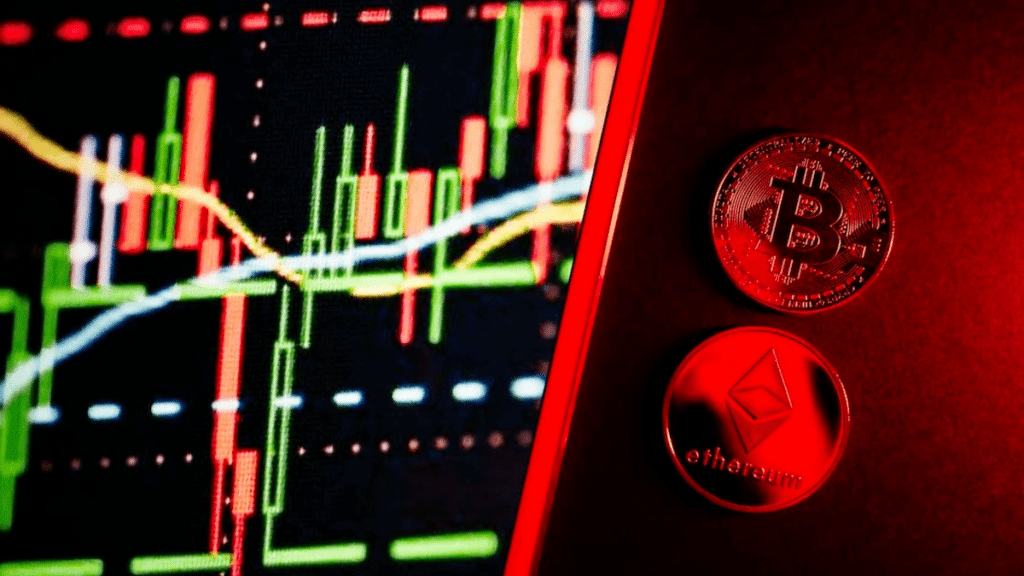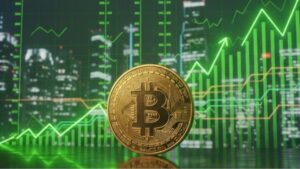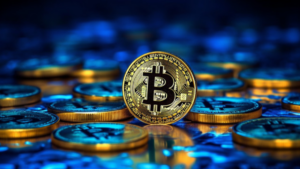Skepticism surrounds crypto exchanges, and Binance is not an exception. After a series of meltdowns and shocks in 2022, market scrutiny continues. The stablecoin crash and the FTX collapse left investors and businesses uncertain. These unfortunate events convey that everyone can be subject to risks. Giant or not, established or not, no one is immune to market volatility.
Binance faces challenges as BTC balances outflows and the money laundering investigation continues. But now, the crucial factor to watch is its capacity to sustain its operations. More Bitcoin and other coin outflows may increase pressure on its reserves.
Binance—in its favor—continues to dominate the crypto exchange market. Although the relative weakness of its peers defines its strength, resilience can be seen in some aspects. Even better, it remains the primary Ethereum (ETH) coin exchange as balances and the Ethereum price increase.
Moreover, it maintains a decent asset margin to cover its trading volume. Its three-to-six-month trading price is moving sideways. Even better, the notable uptrend since last week is a testament to its durability. Concerning its price, one can expect its near-term trend to stay hammered. But one must not discount its long-term rebound potential.
Binance: Past and Future
Since its inception in 2017, Binance has shown dramatic growth. It achieved more popularity in the last two years and reached its peak.
In 2022, the picture was quite different for Binance and the whole crypto exchange market. Inflation and interest rate hikes were not a friend of the cryptos. Binance threats came almost at the same time at varying levels. From the stablecoin collapse and Bitcoin outflows, there came another threat. The investigation by the DOJ has speeded up. These do not only affect Binance since it is an industry staple. In turn, the market plunged as average prices dropped and did not show near-term reversals.
But amid rugged market conditions and tighter competition, Binance has remained a champion. It capitalized on the FTX bankruptcy. Despite the overwhelming Bitcoin and Binance Coin outflows, it continues to assert its power. Binance holds over 90% of Bitcoin’s spot trading volume. And after accounting for all BTC withdrawals, BNB has 580,400 Bitcoins[1]. Fortunately, the downtrend has become more stable than it was two weeks ago. Overall, it controls about a quarter of token allocation among crypto exchanges. Indeed, it stays capable of withstanding external pressures.
Likewise, it remains the most preferred Ethereum (ETH) exchange, with approximately 4.8 million coin balances. Its closest competitor, formerly the largest, now has 4.3 million, giving them a gap of 12%. Indeed, Binance has shown incredible speed, overtaking it in a short period. Even more noticeable is that both coin balances and the Ethereum price show a sharp uptrend. As such, we can observe their direct relationship as more and more coin owners shift to it.
But of course, Binance must stay careful today. Market disruptions are still far from over. Interest rates may keep increasing, although increments may start to cool down. If there is one thing investors must learn, bankruptcy may happen regardless of company size and finances. One must expect more outflows as traders may shift to more liquid assets.
Despite the skepticism, other attributes make Binance a prudent investment choice. For instance, its relative strength and stability are evident. It takes advantage of the industry downturn to retain its market positioning. Yes, its absolute strength stays underwhelming. But its current standing makes it one of the possible last men standing.
Given all these attributes, experts don’t think Binance Coin will have the same fate as FTX. After all, its price drops and coin withdrawals remain manageable. FTX has shown massive price decreases and BTC outflows a few months before its collapse. The following section discusses its price trends, financial capacity, and sustainability.
BNB Price Valuation
We will make a fundamental and technical assessment of the BNB price. During the first half of 2022, BNB suffered from a sharp price downtrend. It coincided with a series of bankruptcies and stablecoin collapses. Also, one can attribute it to skyrocketing inflation and interest rates. If we look at the historical price of BNB, we can see an inverse relationship between the two.
In Q1 and Q2 2022, inflation intensified and peaked at 9.1%. In contrast, BNB price lost more than half its value as it dropped from $490 to $210. The second half shows quite a different pattern. Inflation lulled and eventually landed at 7.1%. In contrast, BNB showed a slight recovery as it ended the year with a 16% increase.
Despite this, unleashing its potential remains a challenge. We still have to consider interest rate hikes that may force people to withdraw for liquidity. An increased preference for savings and more liquid securities may happen. These factors can hamper the BNB price rebound.
By 2024, people expect the global economy to stabilize further. Inflation and interest rates may keep decreasing. We can also see economic activities increase, leading to more capital inflows and higher purchasing power. Crypto inflows may rise again, putting upward pressure on BNB prices.
But to be more conservative, one can rate BNB as a hold for now. While there are opportunities ahead, risks remain evident. The DOJ investigation may also erode crypto buyer confidence and value. Note that the crash and controversies are also present in some of its peers. These match the still volatile economy, which raises skepticism among crypto investors.

Image Source: TradingView
On the technical side, BNB has already exceeded the previously expected resistance level of $290-300. The $250 mark serves as its bullish breakout point. Now, it is the new support level that can entice buyers. As the BNB price rebounds, one can set the resistance level at $321-335 and the support level at $270-280. Even so, investors must be careful, as a dip to $245 and below may convey a bull trap.
But now, mixed market conditions may lead to contrasting impacts that offset one another. Given the fundamental and technical analysis, buyers must be more careful with BNB trading, especially amid continuing market scrutiny.










